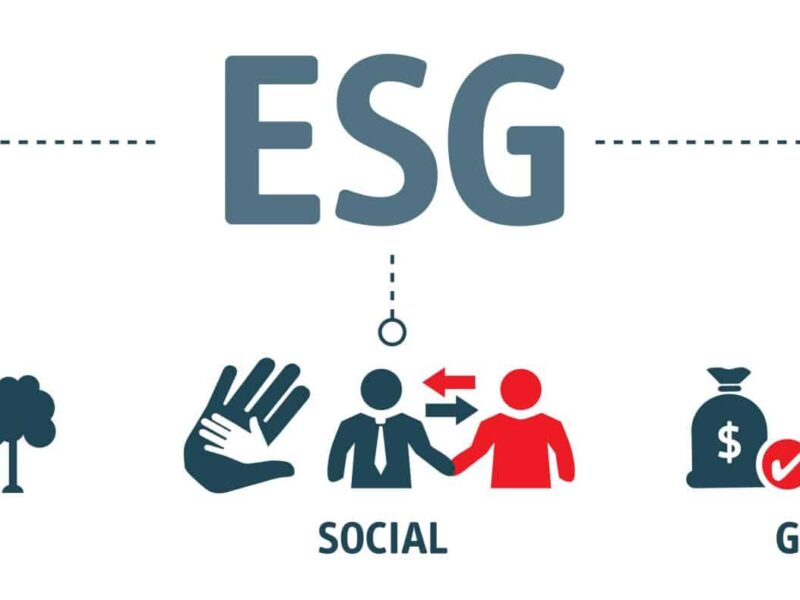
How Can Landlords Make the Most of the PropTech Revolution
The digital revolution is well underway. Smart phones are ubiquitous, our files and data are moving to the cloud, and analogue technology is a thing of the past. This revolution will continue with the development of emergent technologies.
However, this revolution is not happening everywhere. Some sectors are lagging. Digital intensity is a measure of how digitised a sector is, and is calculated with several indicators, including:
- ICT/software investment compared to overall investment
- The number of ICT specialists in this sector (as a fraction of total employees)
- The usage of digital channels for sales
According to a 2018 Organisation for Economic Co-operation and Development (OECD) paper (“A taxonomy of digital intensive sectors”, Calvino et al.), real estate is at a low level of digitalisation. This is in stark contrast to sectors including telecommunications, IT, finance, and insurance. This will be obvious to anybody in real estate and is something I have first-hand experience of. I am a product manager at Gridizen, a SaaS property management platform. As part of my role, I have spoken to many property executives from a range of companies. I am frequently surprised by how archaic their digital processes and software are.
There is hope. PropTech has been growing strongly. According to PropTech1 Ventures’ “European PropTech Trends 2020” report, €77 million was invested in the European PropTech sector in 2014. In 2019, it was well over €500 million. This is a growth rate of 45% per annum, and this signals that the real estate sector is becoming more digitised. However, what can be done to ensure landlords make the most of the PropTech revolution?
Let’s break down real estate digitisation into supply and demand. The increase in PropTech investment suggests that the supply is there. Accordingly, the low digitisation must stem from a lack of demand. This is due to a disconnect between property companies and PropTech providers.
The term “Chief Innovation Officer” was first coined in a 1998 book. 29% of Fortune 500 companies now have a senior innovation executive (Harvard Business Review, 2019). In other companies, it is the role of the CTO to drive innovations to enable the business. Having a dedicated innovation executive is an effective way for companies to develop. These execs can change existing business processes, or adopt new technologies (in our case PropTechs). For institutional landlords to digitise, they should have a senior innovation executive. Do they?
Interestingly, they do. KPMG’s Global PropTech Survey 2019 states that “95% of real estate companies have someone responsible for leading digital transformation and innovation.” In 62% of these cases, this person is a senior employee at C-level suite. So why is the sector still not digitised? KPMG’s survey then shows that the majority of these innovation executives are not technical or digital specialists. I believe this is a key factor explaining the sector’s low digitisation. 40% of these digital leaders come from a real estate, construction or finance background. Earlier I mentioned a disconnect preventing higher digitisation. In particular, there is a cultural disconnect between the innovation executives sourcing the innovation and the PropTechs creating it. This is supported by KPMG’s findings. Their report says “there is a cultural mismatch between real estate – an industry that is reluctant to let go of its traditional practices – and the innovative, ‘move fast and break things’ culture favoured by experts in digital technology”. 40% of PropTechs polled believe further engagement with property companies is not a business priority for real estate. 34% believe the lack of a designated person at property companies to drive the strategy is a barrier. This is something I have also witnessed. So, what can property companies and PropTechs do to bridge this cultural disconnect? Clearly recruiting an innovations officer is not enough. Compromise is key, and I believe the changes needed are:
- Property companies should have an innovation officer. Companies and these officers should learn from digital/start-up culture.
- PropTechs should change their sales and customer engagement strategies. This will help property companies to assess PropTechs more accurately.
Move SaaS and Break Things
The cultural disconnect is not about business attire vs casual, or well-defined hierarchies vs flat ones. The disconnect is about an engrained difference in attitudes, with regards to disruption in particular. To resolve the disconnect, there are two things which property companies need to appreciate. Firstly, the value which software-as-a-service (SaaS) brings, and secondly the start-up ethos of “move fast and break things”. These two are linked.
Traditional property management software was sold on a licensing basis. A large upfront cost would be supplemented with on-premise installation charges. This software was only accessible in the office, and often had a physical machine or server installed. These licenses were linked to lengthy contracts, and so property companies had to ensure the software could scale with their business requirements. This combination of significant CapEx requirements and planning for the future led to heavily involved and slow procurement cycles.
SaaS is a replacement to traditional software licensing. Instead of large upfront costs, companies pay a monthly fee. This fee is based on usage, for example £1 per unit per month, and is more transparent than traditional software pricing. SaaS costs count are OpEx, rather than CapEx. This bypasses traditional CapEx based decision making and procurement. The lack of CapEx requirements strengthens property companies’ balance sheets. This will be at the expense of their P&L and EBITDA, but the proportional change will be less. SaaS tends to be more flexible. Most SaaS companies use rolling contracts, and there is no installation or set-up fee. SaaS removes the CapEx requirements of the past and allows companies to be more agile.
This added agility ties in with the phrase “move fast and break things”, which was first used as Facebook’s internal motto. This is an attitude commonly found in start-ups and suggests prioritising disruption and innovation, even at the expense of errors or problems later down the line. I do not recommend the full motto, but traditional property companies should focus on moving more quickly. There is nothing wrong with trialling some software without an 8-week procurement cycle. Most SaaS software offers a free trial. Signing up is easy. There is no cost to testing the software on a few properties for a few days. If the software is useful, keep using it. If it is not useful, delete the account. This process is low risk, and low effort. If the software is useful, it can be upscaled immediately. The subscription costs are OpEx, and the need for a full financial analysis is reduced. Imagine the benefits of rapidly adopting new software, without having to waste 8 weeks in a procurement cycle.
Some property companies have already done this. I spoke to Gary Haldane, the Interim Digital Director of Kingdom Housing Association, a Scottish housing association with over 4,000 units. Gary has embraced this concept and under his management Kingdom Housing have had several procurement cycles lasting one day or less. I asked Gary what steps he had taken to implement this, and what the benefits have been for Kingdom Housing.
The first step is to have a clear person in charge. Gary has the responsibility for Kingdom’s digital strategy and digital budget. This ensures centralised decision making, and no risk of duplicated software. Kingdom’s well-defined digital strategy is key streamlines decision making. Their current strategy is “cloud only”, with a preference for pure SaaS. Any software platform which does not satisfy this is disregarded. This immediately cuts down the number of contenders for any business requirement. Kingdom’s digital budget is purely OpEx, and this ties in with their SaaS preference. Kingdom also recognise that not all procurement is equal. This is done through cost thresholds, which are defined through Kingdom’s procurement strategy. There is a difference between software which costs £150 a month on a rolling basis, versus £50,000 over three years on a fixed contract. They should not be subject to the same procurement process. However, for many companies, they would be.
Kingdom have a preference on contract length. Providers with shorter contracts (12 months or rolling) are the ideal. Centralised strategy and budget control alongside shorter contracts offer a degree of digital agility which most property companies do not have.
There is another benefit to this. With traditional software licenses, futureproofing is a concern. If property companies are tied into a provider with a 3- or 5-year contract, they have to ensure that the software can scale and will satisfy their requirements over the contract duration. Instead of asking does this software work today, they have to ask if this software will work in the future. This futureproofing is often the longest part of procurement cycles. With shorter contracts and no upfront costs, this is mitigated. Property companies only have to worry about the present requirements. If their needs change in future, they can find a new supplier.
The benefits of SaaS are clear, especially when compared to traditional software. Embracing SaaS allows for a cultural change, where property companies can embrace the “move fast” ideal used by so many start-ups. However, it is difficult to quantify the financial benefits of SaaS.
Quantifying SaaS Savings
Property companies are not the only ones who should adapt. PropTechs should change their sales process to better support property companies. Property companies who are used to quantitative decision making based on ROI (or even IRR/NPV) will struggle with SaaS. It does not create new revenues, and it does not reduce costs. It is difficult to quantify the value which SaaS brings.
Slack is a business communication platform which currently has a valuation of $18bn. They have been growing constantly over the past few years and have tens of thousands of businesses signed up to their paid tier. This includes over 800 customers paying more than $100k in yearly subscriptions, and 70 customers paying more than $1m in yearly subscriptions. These values seem ludicrous. Why would anybody pay that much for a messaging system? We use Slack at Gridizen, and I feel it is worth it. But how can we justify it? A metric I use is the effective efficiency saving. Our product and development team use Slack. Slack costs £6 per user per month. The average UK salary for a software developer is £40,000. This has a gross cost to the business of ~£4.2k per month. If Slack makes a developer 0.2% more productive, it is worth it.
Can the effective efficiency saving be applied to PropTech? I believe it can, and we developed a model to test so. One of our users is a property manager with 400 units, and I organised an elicitation session to understand how Gridizen was making their team more efficient. We went through some of the key time savers (automatic rent collection and reporting, integrated communications channels, maintenance reporting and diagnostics etc.) and I asked the property manager to quantify the benefits of this. Our model showed yearly effective efficiency savings of £120k! This approach is far more compelling to property companies, as it demonstrates a quantifiable benefit of SaaS. We have now adopted the effective efficiency saving as a key metric for our customers, and the advantages are clear.
Conclusion
A few weeks ago, I was presenting Gridizen at HACT (Housing Associations’ Charitable Trust)’s Launchpad. This was a webinar of 5 PropTechs presenting to several housing associations. After the presentation, the chair asked, “What has been the most interesting technology enabled responses to the covid-19 crisis you have seen in housing or beyond?” My answer has not changed. Technology has remained the same, irrespective of covid-19. But the relationship of property executives with technology has changed. They were no longer able to ignore digital transformation. With closed offices, and the need for remote working, the benefits of SaaS become evident. At the start of this article I suggested that digitisation is low because demand is not there. Watching property companies switch to remote working in the space of 7 days confirmed it.
The recent surge in PropTech is a sign that the real estate sector is finally becoming digitised. However, adoption is hindered by a cultural mismatch between property executives and PropTechs. The relationship between the two is symbiotic. PropTechs need property companies for revenue and usage. Property companies need PropTechs to drive innovation and remain competitive. I believe both parties should adapt to better support each other, and lead to our mutual success.













